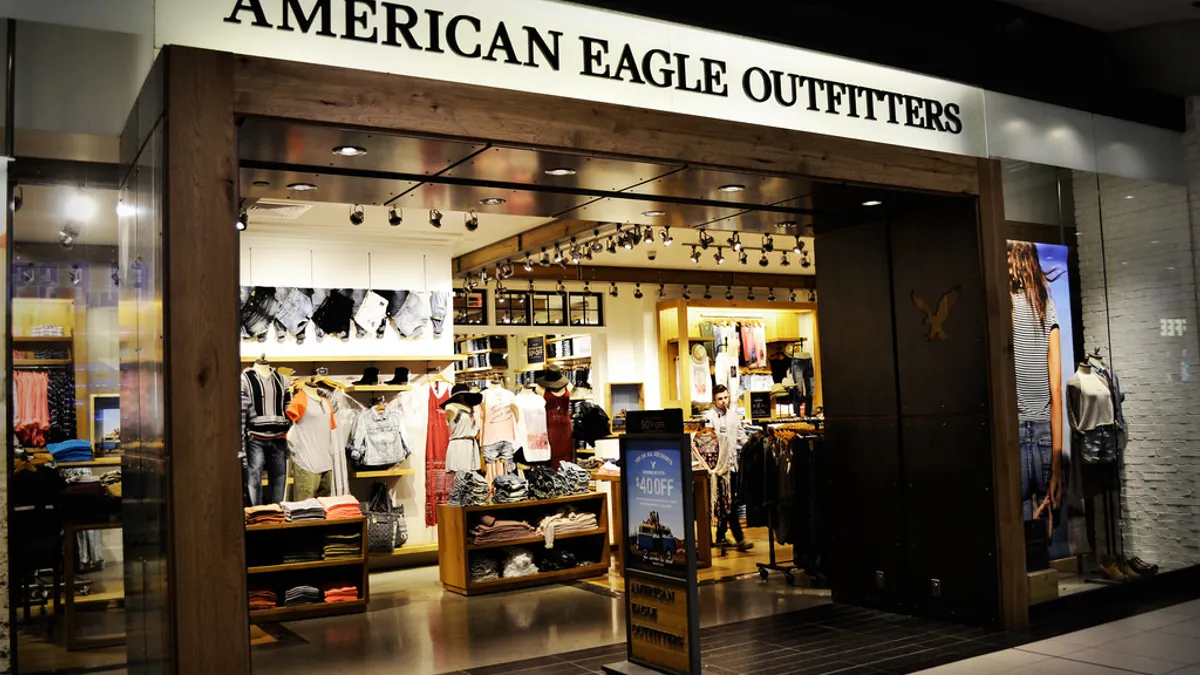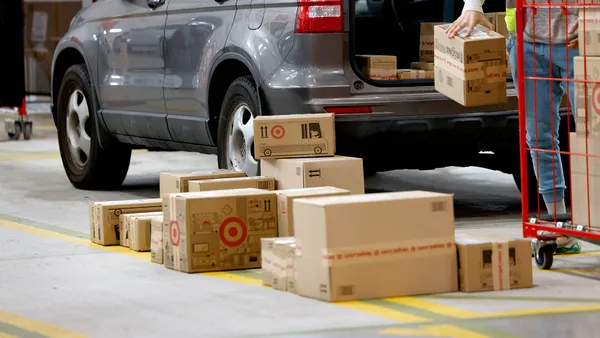Retail distribution centers are challenged with growing order volume and a need to maintain social distancing between employees. To conquer that challenge, many warehouses are enlisting the services of robots.
Clothing retailer American Eagle Outfitters recently added more than two dozen robots to its distribution centers. The move is expected to not only help overcome current challenges but lead the way to what the company says is a supply chain of the future.
Greater pressure on e-commerce fulfillment
More retail transactions have been moving online since the start of the pandemic. Online sales were up 55% year-over-year in July 2020, and total 2020 online sales are expected to eclipse all of 2019 by October, according to an analysis by Adobe Analytics.
E-commerce growth outpaced that of brick and mortar in recent years, and now the pandemic has increased the pressure on fulfillment centers, said CEO of Kindred Marin Tchakarov. Kindred notes many of its customers are processing e-commerce volumes far beyond levels typical of peak periods.
"Many still struggle with a reliable consistent labor pool to address the growing needs of e-comm fulfillment. That is exacerbated in the current environment with the social distancing and health and safety considerations," Tchakarov said.
American Eagle began working with Kindred Sort robots in 2018 as part of a pilot program to test the efficiency of robotic picking in its distribution centers. It is now expanding the fleet with 26 additional units to meet social distancing requirements and the surge in e-commerce volume due to the pandemic.
AEO noted in its first quarter 2020 earnings call in June that online demand grew from 33% to 70% as new online customers doubled after stores closed.
The more they pick, the more they learn
Adoption of artificial intelligence and robotics will play a greater role in distribution centers as AEO commits to building a supply chain of the future, Shekar Natarajan, SVP of Global Inventory and Supply Chain Logistics for AEO, said in a press release. "Kindred robots in AEO’s distribution centers have helped to reduce operational costs, increased associate safety, and expedited throughput to better serve our customers," Natarajan said.

Kindred uses AI to continuously improve its abilities, and it grows more intelligent as it picks more items. Its Sort pick-and-place robots use AutoGrasp, a robotics intelligence platform that identifies items and puts them in a compartmentalized wall with slots for each order. As products are fed into the bin, Sort picks the appropriate ones and places them in the appropriate order bin in the put wall.
The technology combines vision, grabbing and algorithms to identify, pick and drop things like clothing, poly bags and other small items.
"It focuses on one of the most mundane, repetitive tasks that was previously done by humans and does it with a high degree of autonomy and accuracy," Tchakarov said.
Adoption is simple and easy, Tchakarov said. The robot-as-a-service model enables distribution centers to quickly adopt robots without any capital expenditures and instead a pay-for-performance cost model. Sort robots can be wheeled into a facility and be up and running within a day, Tchakarov said.
Warehouse pick stations become socially distanced
In the pandemic, American Eagle has shifted priorities to protect workers and the business and to prepare for a "new future," CEO Jay Schottenstein said on the Q1 call.
The retailer hired a medical consultant and implemented protective measures at distribution centers. That has included providing masks, gloves, thermal temperature scanners, staggered schedules and social distancing.
AEO has deployed the 26 additional robots in two of its facilities as a means to not only handle the increased volume but also support social distancing requirements. Instead of relying on multiple co-workers to stand near each other to pick and place items, one employee can manage three to four Kindred Sort robots simultaneously. This enables AEO distribution centers to keep up with e-commerce fulfillment with fewer workers in proximity to each other.
"It focuses on one of the most mundane, repetitive tasks that was previously done by humans."

Marin Tchakarov
CEO of Kindred
Kindred's data indicates retailers have experienced dramatic peaks in online orders since the pandemic started. The number of units Sort robots process per day has increased by 45% across the installed base. Kindred’s robots have picked more than 70 million units to date.
Other retailers, including The Gap and Carter’s, are also using the robots in distribution centers. In June, Gap acquired an additional 73 Sort robots to install in its U.S. distribution centers, bringing its fleet total to more than 100. Between January and April, the retailer had used Sort robots to sort more than 13 million units of merchandise, a time in which the systems facilitated an average sorting speed of 335 units per hour.
This story was first published in our weekly newsletter, Supply Chain Dive: Operations. Sign up here.













